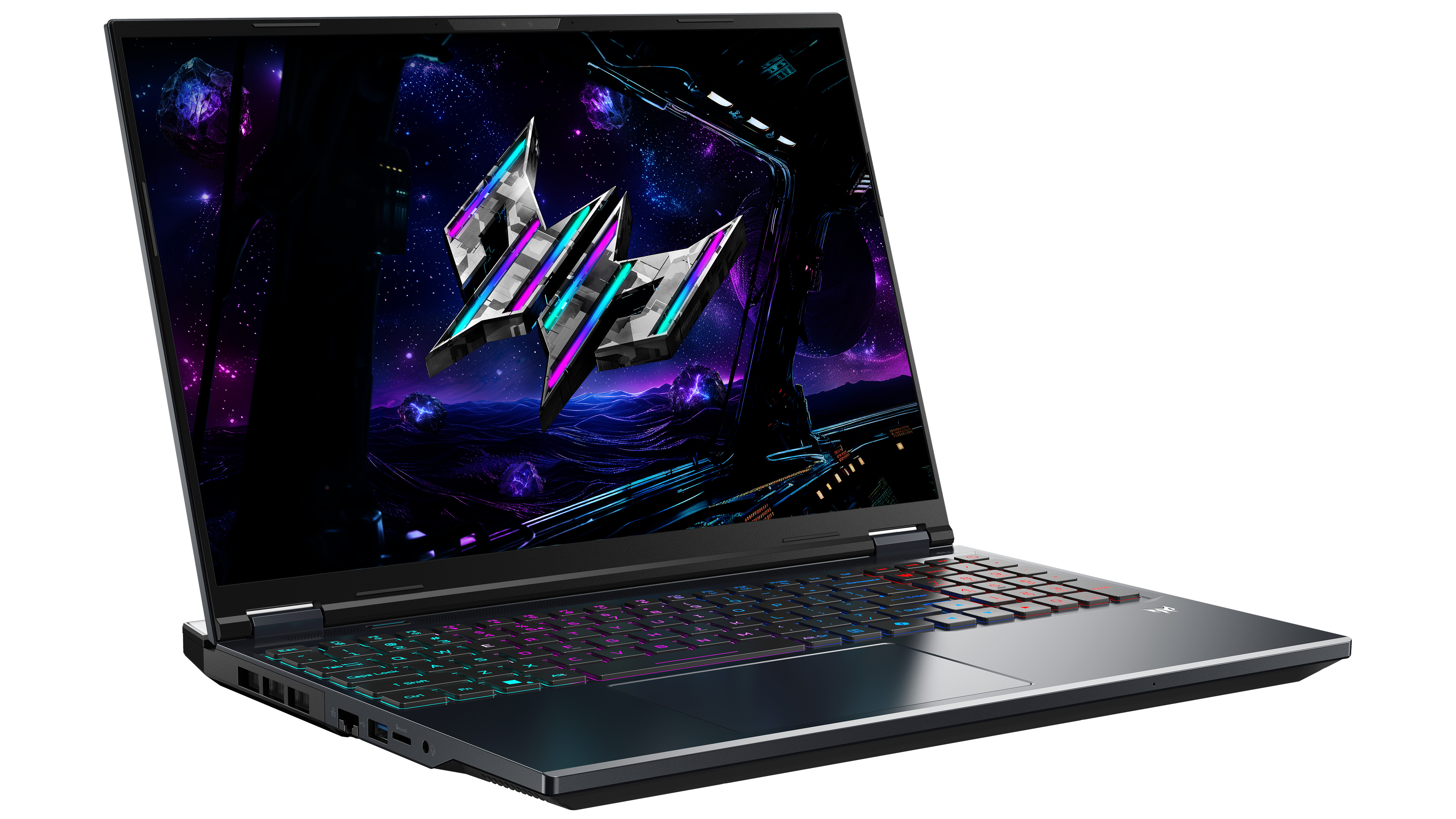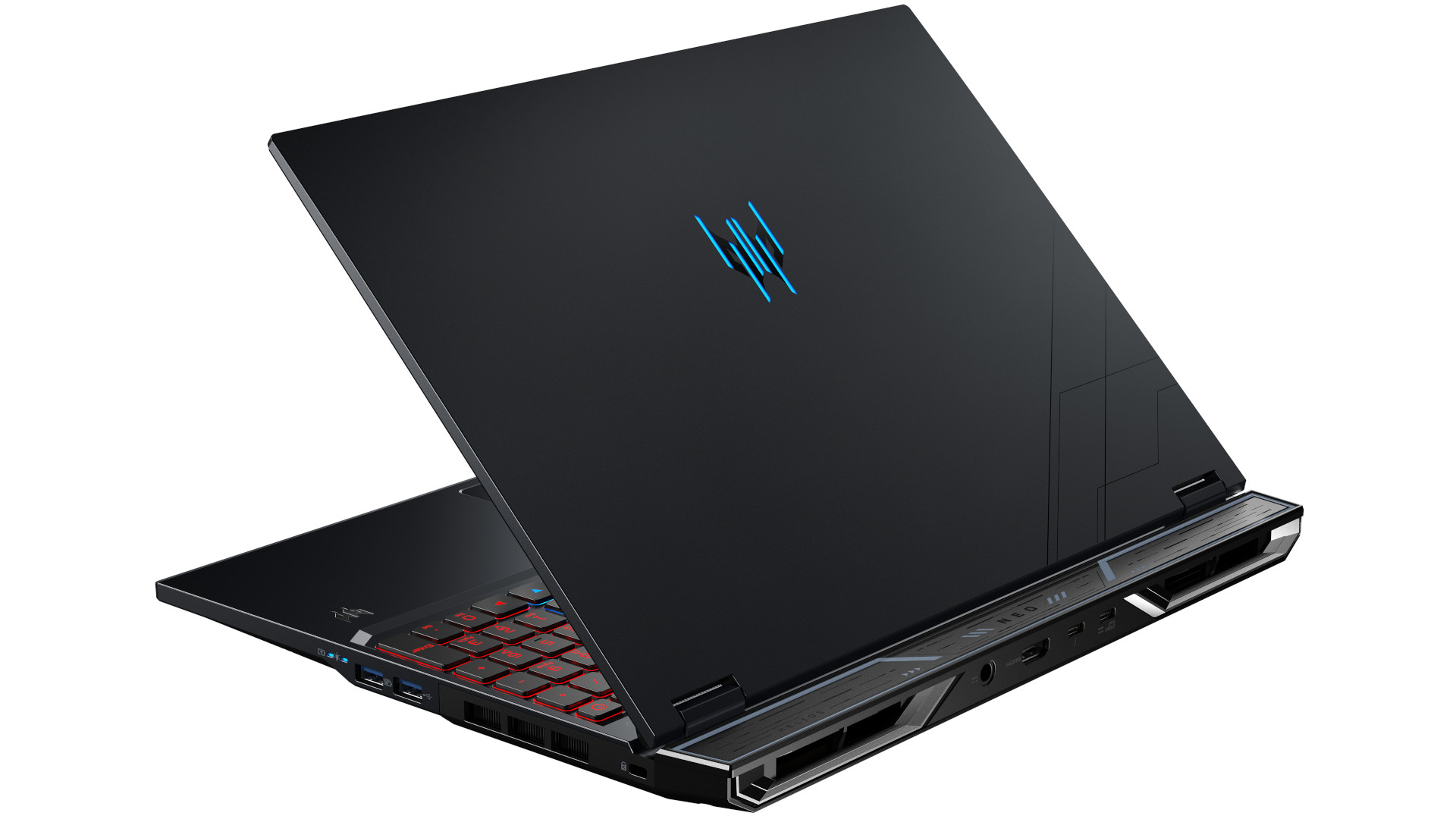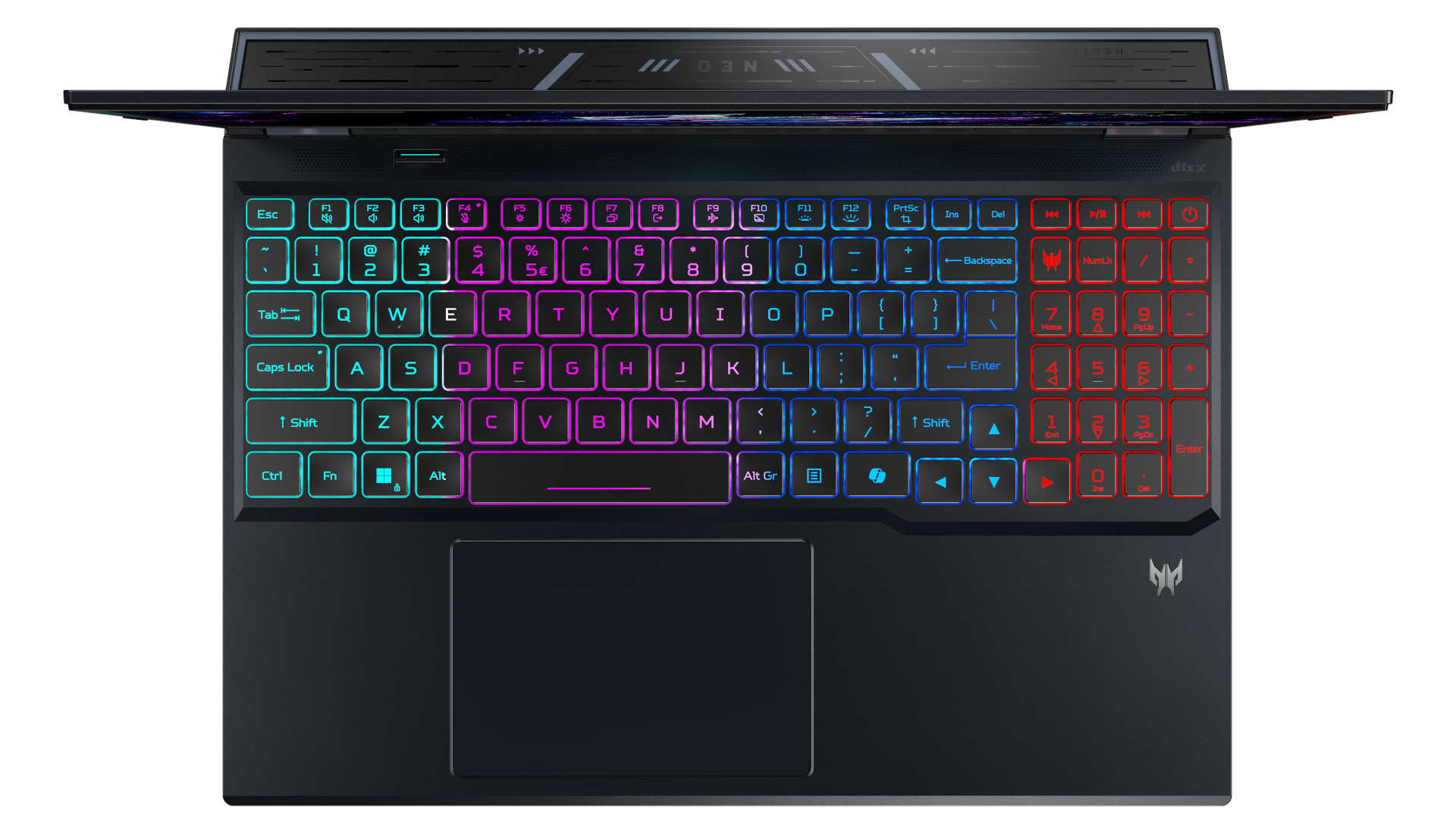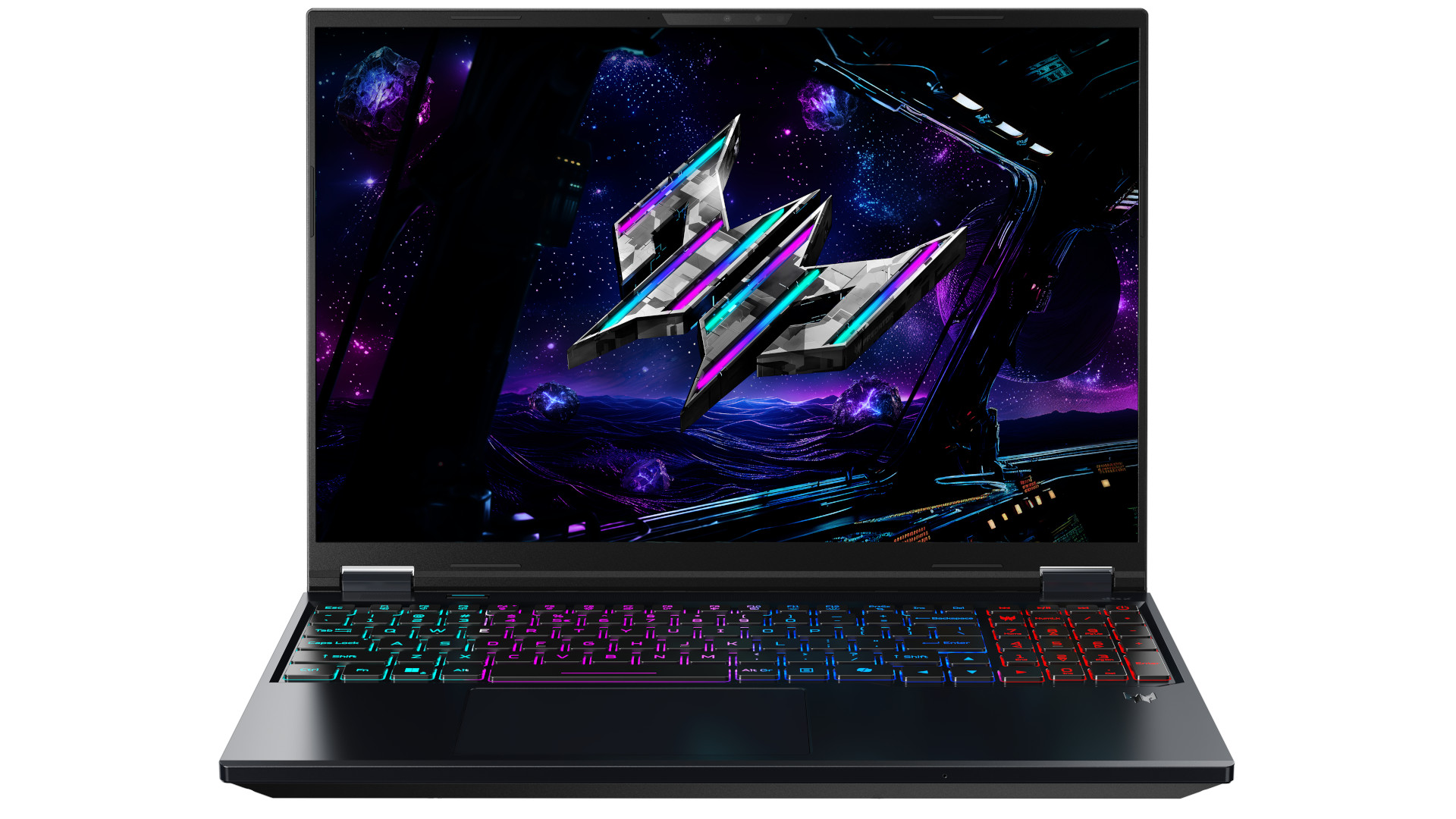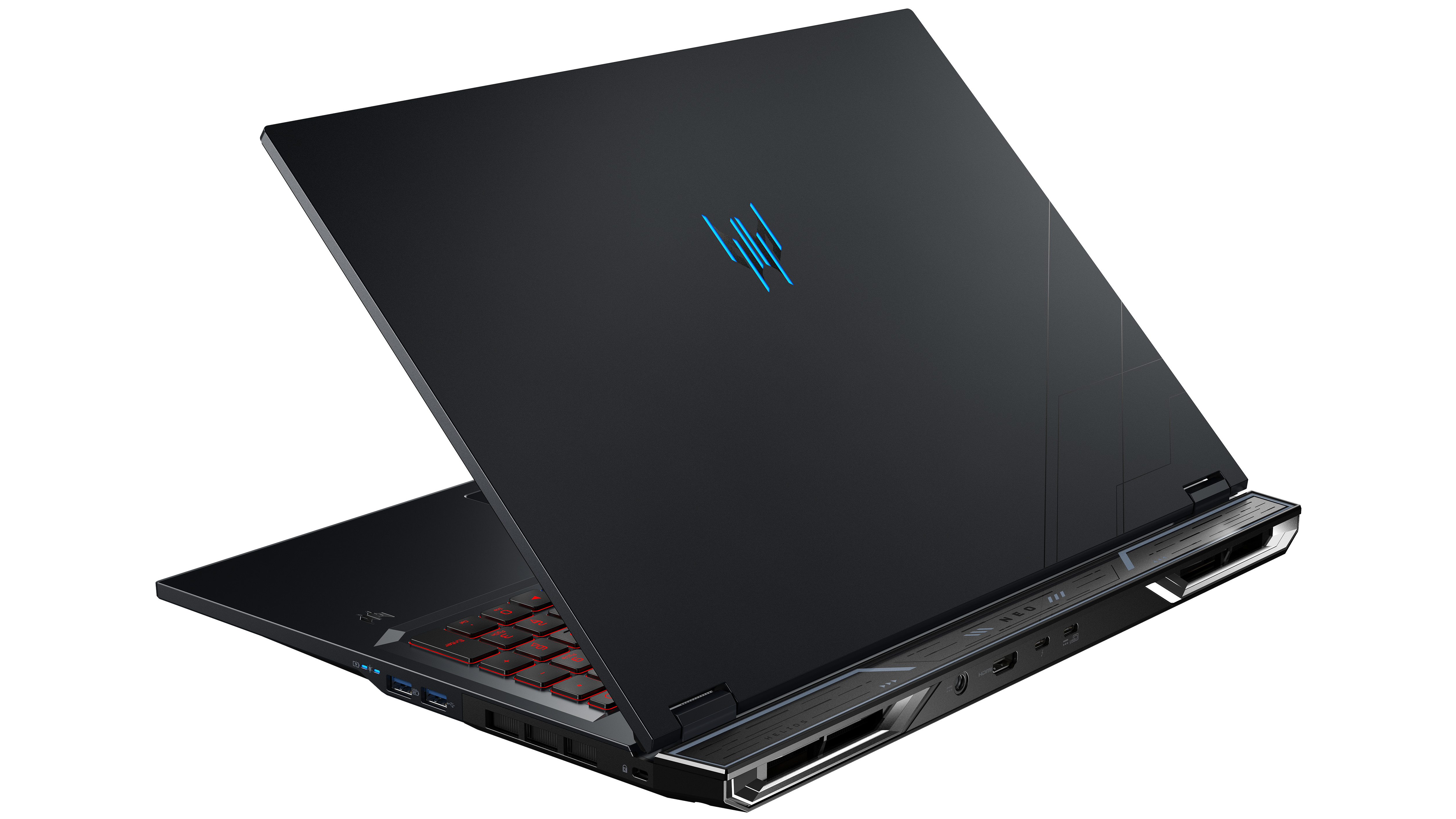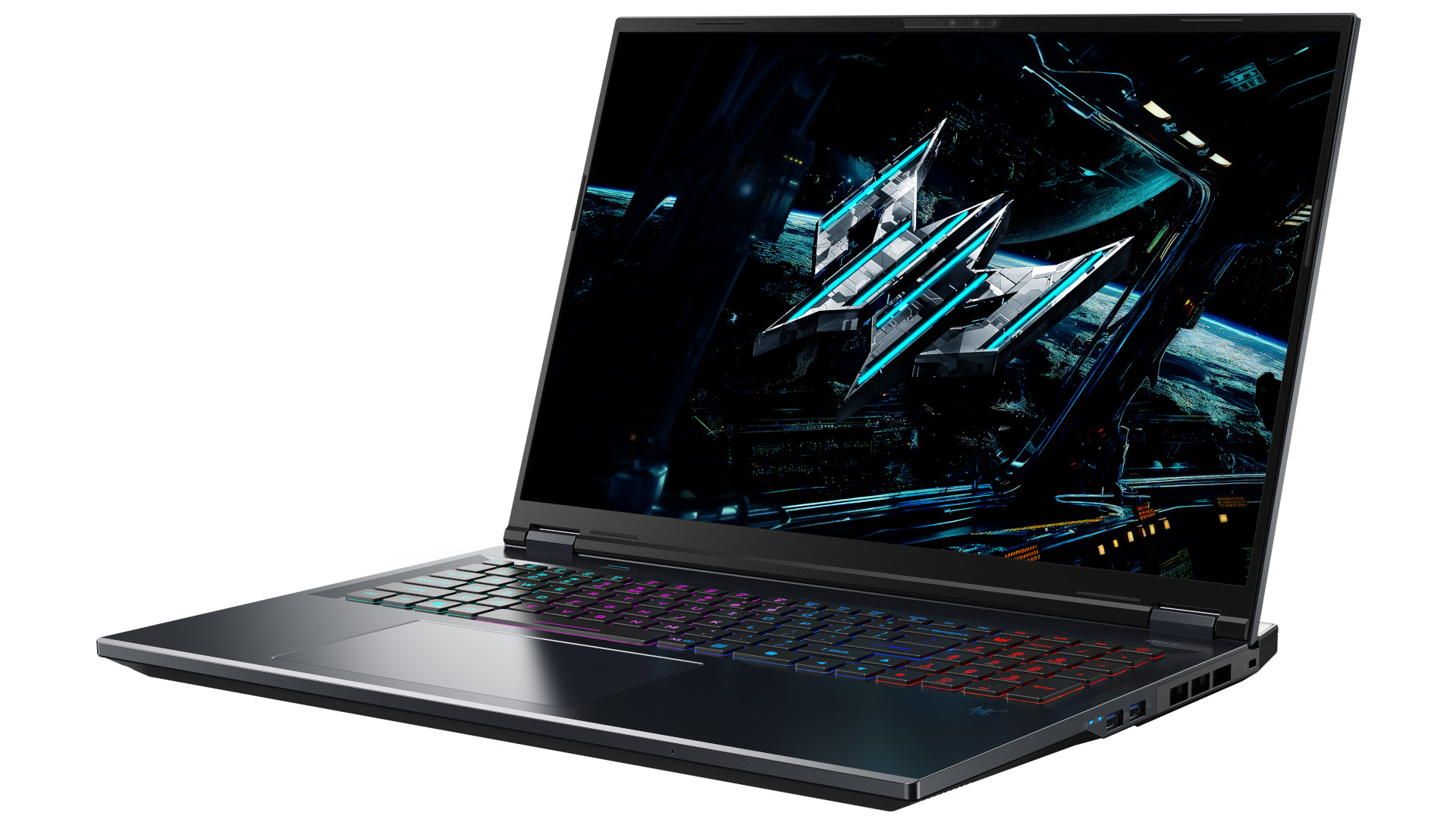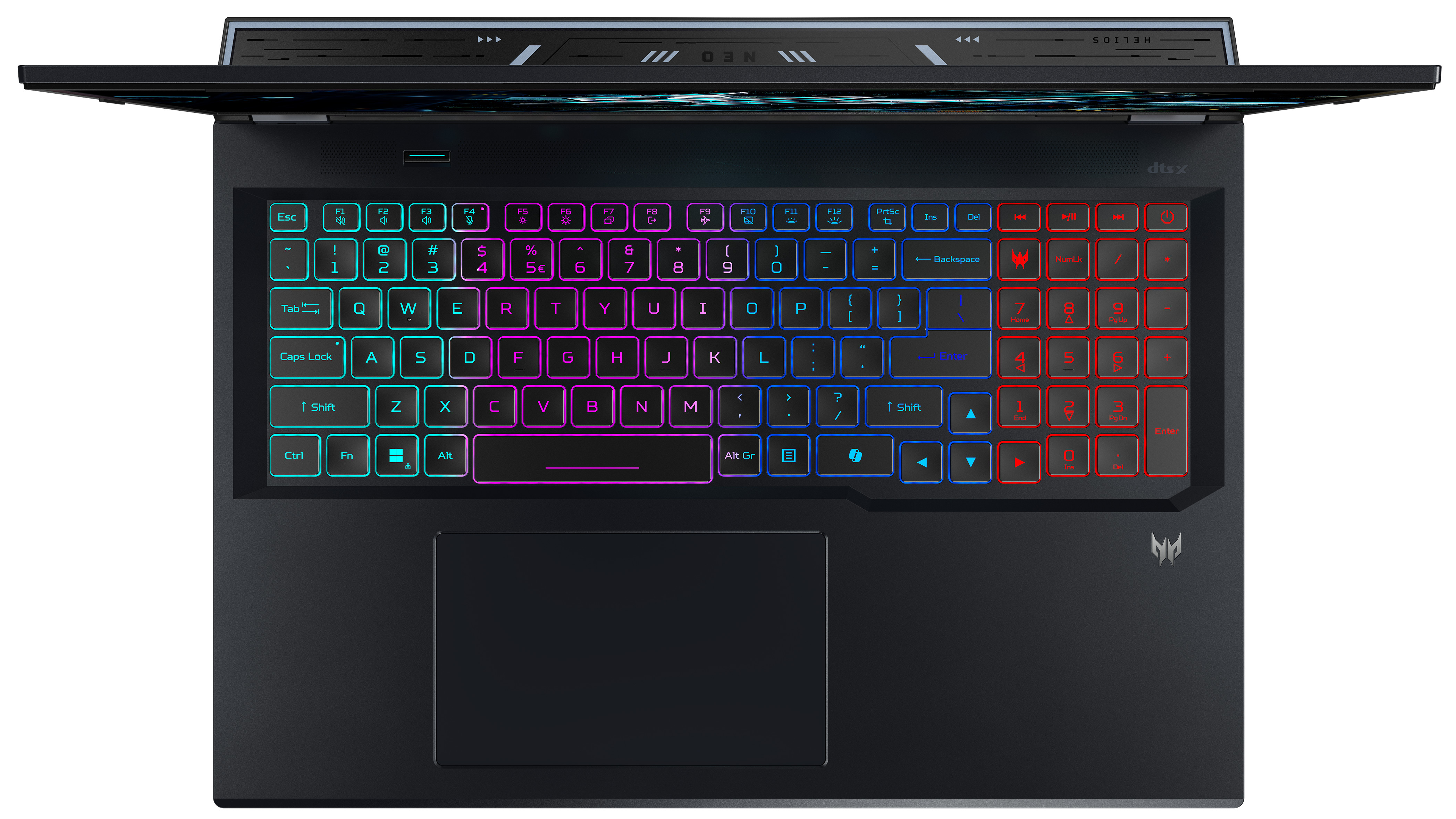Acer just announced a couple of new Predator Helios Neo AI gaming laptops, and they’re among the first to feature NVIDIA’s new RTX 5070 and RTX 5070 Ti mobile GPUs. With prices starting at $1,899.99, they could be the next best way to land NVIDIA’s new “Blackwell” hardware, assuming standalone cards are still sold out everywhere a few months from now.
This announcement comes during the Intel Extreme Masters Katowice Counter-Strike 2 (CS2) tournament in Poland, at which major teams compete for a huge cash prize. Yes, that means that alongside the fresh NVIDIA hardware are Intel’s latest Arrow Lake-HX mobile CPUs. Together, this combination should deliver some impressive performance in gaming and AI tasks.
The more compact Predator Helios Neo 16 AI is unsurprisingly the more affordable option, expected to start at about $1,900 when it launches in North American markets in April. EMEA regions will have to wait until May when it’ll launch starting at €1,699.
The larger Predator Helios Neo 18 AI is expected to start at about $2,200, and it should launch in North America in May. Again, EMEA regions will have to wait a month longer until June, where it’ll start at €1,799.
Here’s a look at the raw specs going into these laptops.
| Spec | Predator Helios Neo 16 AI | Predator Helios Neo 18 AI |
|---|---|---|
| Processor | Intel Core Ultra 7 255HX, Core Ultra 9 275HX | Intel Core Ultra 7 255HX, Core Ultra 9 275HX |
| Graphics | NVIDIA RTX 5070 Ti, RTX 5070 (Laptop) | NVIDIA RTX 5070 Ti, RTX 5070 (Laptop) |
| Memory | Up to 64GB DDR5-6400MHz | Up to 64GB DDR5-6400MHz |
| Storage | Up to 2TB PCIe 4.0 NVMe (2 slots) | Up to 2TB PCIe 4.0 NVMe (2 slots) |
| Display | 16 inches, up to QHD+ OLED, 240Hz, 400 nits, 100% DCI-P3, 1ms, NVIDIA Advanced Optimus | 18 inches, up to QHD+ mini-LED, 250Hz, 100% DCI-P3, 3ms, NVIDIA Advanced Optimus |
| Wireless | Wi-Fi 6E, Bluetooth 5.4 | Wi-Fi 6E, Bluetooth 5.4 |
| Ports | Thunderbolt 4, USB-C 3.2 (Gen 2), 2x USB-A 3.2 (Gen 2), USB-A 3.2 (Gen 1), HDMI 2.1, microSD reader, 3.5mm audio | Thunderbolt 4, USB-C 3.2 (Gen 2), 2x USB-A 3.2 (Gen 2), 2x USB-A 3.2 (Gen 1), HDMI 2.1, microSD reader, 3.5mm audio |
| Battery | 90Wh | 90Wh |
| Audio | Dual speakers, DTS:X Ultra | Dual speakers, DTS:X Ultra |
| Camera | FHD + IR | FHD + IR |
| Dimensions | 14.04 x 10.84 x 356.78mm x 0.53-1.04 inches (275.5mm x 13.47-26.75mm) | 15.78 x 12.12 x 0.58-1.1 inches (400.96mm x 307.9mm x 14.9-28mm) |
| Weight | 5.95 pounds (2.7kg) | 7.27 pounds (3.3kg) |
| Price | From $1,899.99 | From $2,199.99 |
| Launch date | April (NA), May (EMEA) | May (NA), June (EMEA) |
While NVIDIA’s RTX 5000 GPUs are undoubtedly the main attraction, Acer isn’t shy about offering some top-tier displays for its new gaming laptops, complete with NVIDIA G-Sync, Advanced Optimus, and a MUX switch.
The Helios Neo 16 AI sports a 16-inch display available in four different configurations. The most expensive has an OLED panel, QHD+ resolution, 240Hz refresh rate, 1ms response time, 100% DCI-P3 color, and 400 nits brightness.
At the other end of the spectrum is an FHD+ display with 180Hz refresh rate, 3ms response time, 100% sRGB color, and 400 nits brightness. This is likely the display that will ship with the $1,900 introductory model, so be prepared to spend more as you scale up.
On the Helios Neo 18 AI are four other 18-inch display options, largely with the same varying specs. The top option is mini-LED with a QHD+ resolution and 250Hz refresh rate, while the cheapest hits 165Hz at an FHD+ resolution.
NVIDIA’s mobile RTX 5000 GPUs might be the best way to land new hardware
NVIDIA launched its RTX 5080 and RTX 5090 desktop GPUs on January 30. The event was marred by extremely limited stock, with some major retailers only having four or five of the flagship GPUs to sell. Unsurprisingly, the new desktop cards sold out immediately.
Worse, it could be several months before there’s any sort of meaningful selection available to buy, and in the meantime, scalpers who managed to snag a card at MSRP are jacking up prices by thousands of dollars. It’s unclear if the same thing will happen to the upcoming RTX 5070 and RTX 5070 Ti desktop GPU launch on February 20. If I was betting, I’d put my money on “Yes.”
While the RTX 5080 and RTX 5090 didn’t blow us away in terms of “raw power,” their access to DLSS 4 upscaling magic and a newfound focus on Tensor core performance for associated AI gives them strong appeal, especially for anyone who doesn’t already own an RTX 40-series GPU.
Windows Central Senior Editor Ben Wilson, who reviewed both of the top-tier NVIDIA RTX 5000 GPUs, also tested DLSS 4 performance in Cyberpunk 2077. Using the RTX 5080, he discovered a 244% performance bump with DLSS 4’s new Multi Frame Generation. That’s frankly incredible, and even if the game is being presented with “fake frames,” it doesn’t change the fact that you’re getting a massive boost to performance.
Despite laptops using mobile versions of the desktop GPUs — with slightly reduced power and performance to better fit the diminished thermal capacity of a laptop — these new RTX 5000 laptops like the Predator Helios Neo 16/18 AI deliver DLSS 4 and its perks in a tidy package.
An early look at NVIDIA’s mobile RTX 50-series pricing
Until recently, it remained unclear how much gaming laptops featuring NVIDIA’s new mid-range RTX 5000 GPUs would cost. Some of the mystery has been solved.
Just a couple of days ago, listings for new ASUS laptops featuring the RTX 5070 and RTX 5070 Ti popped up at Best Buy and the official ASUS website. With prices starting at about $1,900 for a ROG Strix G16 with an RTX 5070 Ti, it looks like Acer is coming in at a higher price with its RTX 5070 Predator Helios Neo 16 AI starting at about $1,900.
There’s more nuance to the cost than the GPU inside, but overall, pricing seems more reasonable than I was expecting. There are bound to be more affordable and more expensive options headed our way in the near future, but the roughly $2,000 arena for these rather high-end laptops should appeal to plenty of gamers who prefer a mobile platform.


